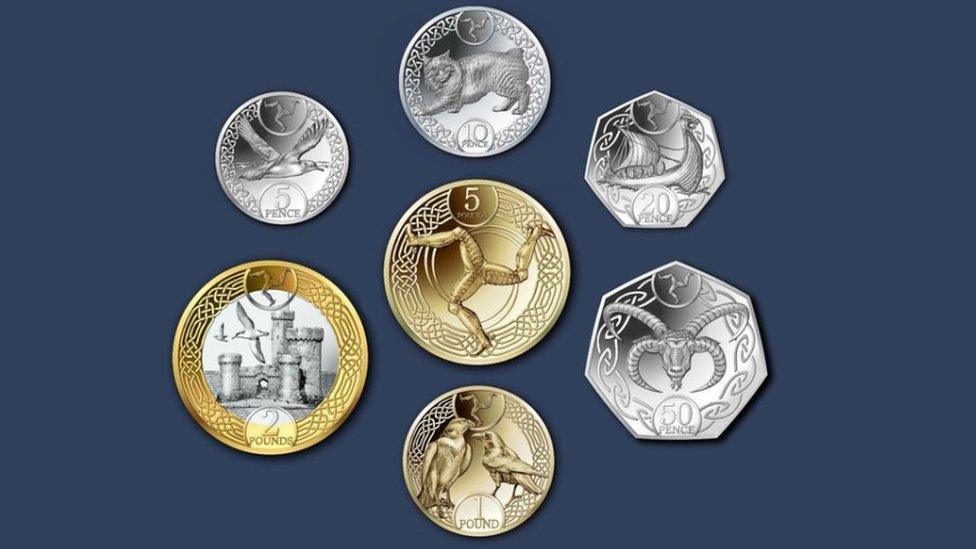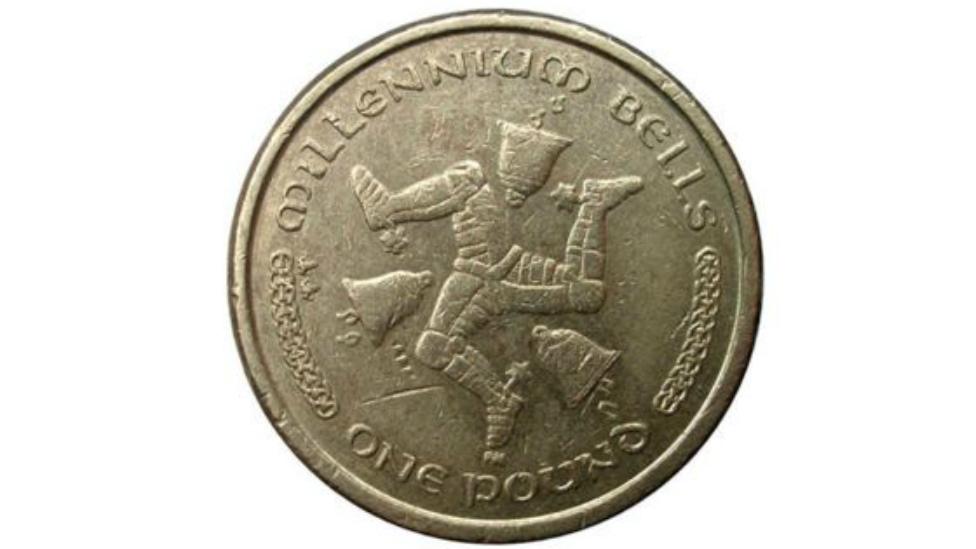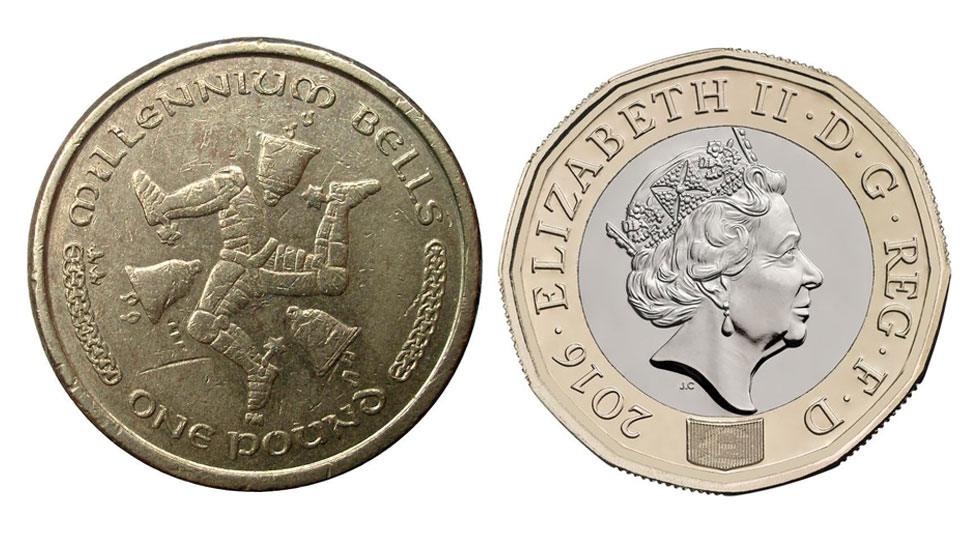Manx £5 coin: Treasury plan to release 20,000
- Published

Five pound coins have been legal tender on the island since 1981
A £5 coin could be widely used on the Isle of Man in the future if plans for the release of 20,000 are approved.
Five pound coins have been legal tender on the island since 1981 but have been seen as collectors' items in the past.
The Treasury's Colin Campbell said they had previously been released in such small numbers, most people would "not even know of their existence".
He said the new coin will have a longer shelf-life than the £5 note.
The Treasury will present a currency order, which includes plans for a redesign of the coin, at a sitting of Tynwald on 21 February.
If the order is approved, the coin will be launched on 10 April and the Treasury will push forward with its plan to release 20,000 into circulation.

The redesigned coins feature images including a Viking Longboat, seabirds and the Triskelion
The £5 coin would be 32mm in diameter, made from an alloy of copper, nickel and zinc, and feature the Triskelion, the three-legged symbol depicted on the Manx flag and coat of arms.
Mr Campbell said about 260 coins a year had previously been produced and the wider circulation was unlikely to lead to an issue with fake coins, as the island has no trouble with counterfeiting.
It will be part of a new set of coins for the island, the first complete redesign since 2004.
All seven will have the inscription QUEEN ELIZABETH II - ISLE OF MAN and the year of issue on one side and an "intrinsically Manx" image on the reverse, the Treasury said.
The images include a Manx shearwater, peregrine falcons and a Viking longboat.

Manx currency

As a Crown Dependency, the Isle of Man issues its own banknotes and coins
These, in common with UK coins, bear the portrait of Her Majesty the Queen
Isle of Man coins and notes are not legal tender in the UK, but UK coins and notes are accepted on the island
Source: The Royal Mint

If the currency order is approved, production of the new coins could begin at the London-based Tower Mint on 1 April.
Earlier this week, the Treasury announced the Isle of Man would not be following the UK and would be keeping round pound coins for the foreseeable future.
- Published7 February 2017
